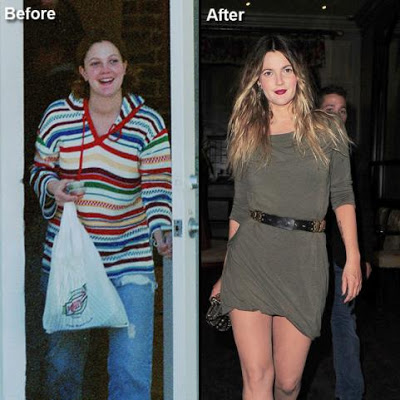Being Thin And Being Lean Is There A Difference
Often people will look at a thin person and think to themselves; now that person is nice and lean. But is that really always the case? Does being thin have a direct relationship with being lean? In order to answer these questions we must examine what it means to be thin verses what it means to be lean.
Now you can define being thin as having a small circumference size. This would be denoted by small waist, arm, leg, and chest diameters as well as a low body weight all in relation to overall height.
The definition of being lean however is measured by overall body composition. This would be denoted by a low percentage of body-fat verses percentage of lean mass (muscle and bone). You may be surprised to know that thin people quite often are not lean at all. In fact, many thin people have a much higher body-fat percentage than you might think!
Now you may be thinking; how is that possible? Thin people don't look fat so how can they have much body-fat? Consider this example:
Two women at 40 years old are both 5' 7" tall and both weigh 120 pounds. Women # 1 has a body-fat percentage of 25 and a waist size of 30. Woman # 2 on the other hand has a body-fat percentage of 16 and a waist size of 27. Both look thin, but woman # 2 is clearly leaner. What could be the cause of this? Why could both women be the same age, height, and weight but one is so much leaner than the other?
Atrophy is the term used for the natural loss of muscle that begins to occur in people at around the age of 25 who are sedentary or do no resistance training or strength training. By the time a person reaches their mid to late thirties a significant amount of muscle can be lost if no resistance training is being done.
Once atrophy begins, ? to 1 pound of muscle is lost per year and is replaced by nearly 2 pounds of fat because as muscle which is metabolically active tissue is lost, metabolism slows down allowing for extra fat storage. This translates to up to 10 to 15 pounds of lost muscle and up to 20 to 30 pounds of extra fat by age 40. So if a person does no form of resistance training it is likely that by age 40 even though they appear thin they will have a higher percentage of body-fat than meets the eye.
Resistance training is often omitted by people, even those who do exercise for general health. Many people will walk, jog, and bike for fitness but resistance training is just as important because aerobic exercise will develop little to no muscle. Indeed resistance training is a recommended activity for anyone looking to induce healthy living.
Nowadays even many cardiologists are prescribing resistance training for their heart patients because when the skeletal muscles and strengthened, the heart experiences less stress during normal daily activities like grocery shopping or vacuuming the carpets.
The American College of Sports Medicine recommends resistance training 2 to 3 times a week for all apparently healthy people, especially adults. If you need help putting together a resistance training program you can seek out the assistance of a qualified fitness trainer or even check out books on the subject from your local library free of charge to get you on your way.
Remember that just because a person is thin does not mean they are lean. While being overweight is a determining factor in accessing risks to your health, so is carrying higher percentages of body-fat so don't just aim to be thin, aim to be lean.
- Prev:Holidaze
- Next:Weight Loss You Can Because You Can
-
Meratol: A Miracle Weight Loss Supplement
Losing weight the natural way may be very gruesome but it is a very re
-
Winter Boots That Make You Look Good
When the clocks go back, you can be certain that winter is on its way.
-
Going With The Herbal Weight Loss Product
When it comes to wanting to drop a few pounds, the best thing that yo
-
A Healthy Diet Check Up From The Neck Up
If you have tried every so-called healthy diet plan on the planet and
-
Discover The Missing Link In Weight Loss
Diets dont work!!!We all know this to be a fact but we still keep look
-
Charita Smith On Her Weight Loss: “Keep Your Promises”
Episode after episode of the hit show Extreme Weight Los
- DON'T MISS
- What is my best approach to eating well?
- Coronado Weight Loss To Improve Your Fitness
- Winning the Long-Term Weight Loss Game
- Avoid These 4 Common Diet Mistakes
- Gentle Weight Loss with Ayurveda
- Tips about how to lose Pounds
- Hoodia Weight Reduction Dietary Supplements Increase Jenny Craig Diet Plan Applications
- Lose Weight In 2 Weeks - Get The Weight Off Quick
- Outdoor Activities to Lose Weight
- Create Fast Weight Loss With A Simple Mindset Twist




